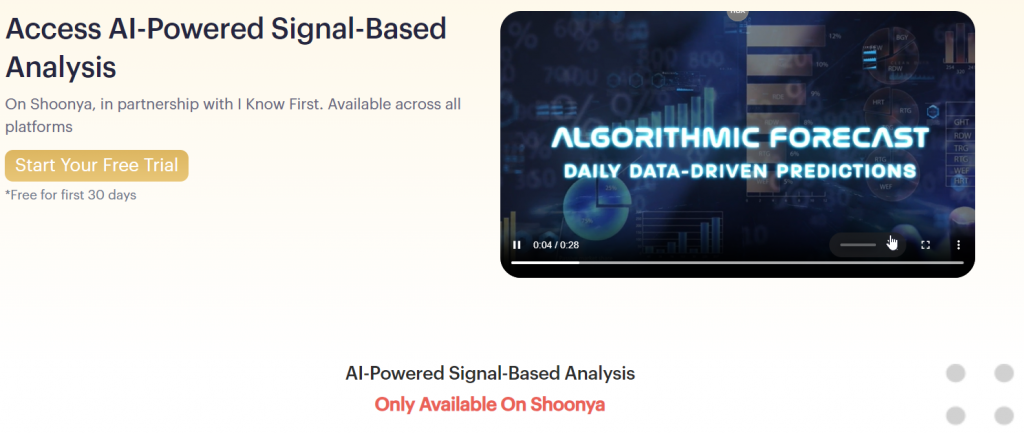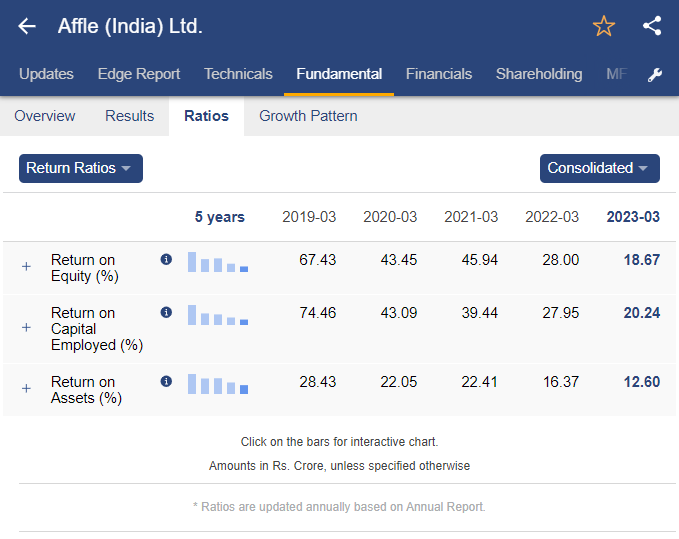20 Handy Reasons For Deciding On AI Stock {Investing|Trading|Prediction|Analysis) Sites
20 Handy Reasons For Deciding On AI Stock {Investing|Trading|Prediction|Analysis) Sites
Blog Article
Top 10 Tips To Help Determine The Costs And Prices Of Ai Trading Platforms That Forecast Or Analyze The Prices Of Stocks.
To make the most of your investment it is important to know and compare pricing for AI software that predicts and analyzes stocks. Knowing the pricing structure is crucial to making an informed choice. Here are 10 top tips to help you evaluate the cost and price of these platforms.
1. Find out more about the pricing model
Subscription-based : Determine if there's a monthly fee or an annual cost and what features are included in each.
Pay-per-use: Determine whether the amount you pay for is according to the use of the platform (e.g. number of transactions or data requests).
Freemium model: Assess if the platform offers the free version with only a few features, and charges for premium features.
2. Compare Pricing Tiers
Comparing the features included in each price level (e.g. basic professional, professional, or enterprise).
Scalability: Make sure that the pricing tiers you choose to use are compatible to your requirements, regardless of whether you're a trader on your own, a professional or part of an institution.
Upgrade flexibility: See the possibility of being easily upgraded or downgraded as your needs evolve.
3. Evaluate Hidden Costs
Data fees - Check if the platform charges an extra cost to access the most valuable data (e.g. data in real time or advanced analytics).
Brokerage charges Check if the platform has additional fees to execute trades or integrate with brokers.
API usage: Determine if API access costs are higher or if the API usage is frequent.
4. Demos as well as Trials are available for free
Trial period: Select platforms that let you test the capabilities of their platform before making an agreement.
Be sure to check the limitations of the trial offer. It may not include all features.
If you feel that the platform isn't suitable for you, be sure that you can cancel the trial.
5. Look for promotions and discounts.
Discounts for annual subscriptions: Check if the platform offers discounts for annual subscriptions as compared to monthly plans.
Referral programs: Check whether you can earn credits or discounts by sharing the platform with others.
Find out about pricing for institutions If you're part of an enterprise with many employees.
6. Calculate the Return on Investment
Cost vs. value: Assess whether the features and forecasts of the platform justifies the cost. Does it help you save time or assist you in making better trading choices?
Find out the platform's success rate, or testimonials from users to gauge its potential ROI.
Alternative costs: comparing the cost of the platform to the costs that might be incurred if it's not utilized (e.g. missed opportunities, manual data analysis time).
7. Review and review cancellations and refunds Policies
Cancellation Terms: You may cancel without hidden charges or penalties.
Go through the policy on refunds to see if you can get a refund for any non-used subscriptions.
Auto-renewal (automatic renewal): Find out whether you need to renew your subscription automatically. Also, find out how to decide to opt out.
8. Price transparency is essential.
Price page that is clear: Make sure the platform is equipped with a clear and accurate pricing page, without hidden costs.
Customer Support For clarification of unclear pricing details and additional costs, contact customer service.
Contract terms: Ensure you know the terms of service and any fines.
9. Check out your competition
Comparing the features and prices of different platforms against their rivals will help you get the best deal.
User feedback: Find out what other people think about the platform to determine whether it's worth the cost.
Examine the positioning on the market for the platform. Does it match your requirements?
10. Calculate the Long-Term Costs
Price rises: Find out if and how often the platform increases its prices.
Feature additions - Determine whether new features are included in your current plan or if an upgrade is needed.
Costs for Scalability: Ensure the platform's pricing is fair when your trading activity or demands for data increase.
Bonus Tips
Try multiple platforms. Test the effectiveness and performance of various platforms by testing the platforms during trial periods for free.
Negotiate pricing: If you're a large-volume user or part of an institution, inquire about custom pricing or discounts.
You should look into educational tools and resources. A lot of platforms offer free educational materials or tools which could be great additions to the features they already have.
By following these tips to evaluate the cost and pricing of AI trading platforms that predict stocks or analyze them make sure you select one that fits your budget and delivers the capabilities and performance you require. A balanced platform can offer you the most efficient of both cost and performance. Read the most popular official statement about ai investing for blog advice including best ai trading software, ai trader, ai invest, stock analysis websites, incite ai, ai stocks, chart analysis ai, best artificial intelligence stocks, trader ai review, trader ai app and more.
Top 10 Tips To Assess The Speed And Latency Of Ai Trading Platforms
The speed and latency of a system is a critical factor when evaluating AI stock prediction/analyzing trading platforms. This is particularly true for algorithmic traders, high-frequency traders as well as active traders. Even milliseconds of delay can impact trade execution and profitability. Here are 10 top tips to assess the speed and latencies of these platforms.
1. Real-time Data Feeds for Evaluation
Data delivery: Check that the platform can to provide data in real-time, with a minimal delay (e.g. less than a millisecond).
Data source proximity: Check whether the server of the platform is located near to major exchanges, which can reduce time to transmit data.
Data compression: Check if the platform is using effective data compression to speed up data delivery.
2. Test Trade Execution Speed
Order processing time: This is the time it takes for the platform to process and complete trades after you have placed an order.
Direct Market Access: Verify that the platform provides DMA. DMA is a feature that lets you transmit orders directly to exchanges without intermediaries.
Execution reports: Find out whether the platform offers detailed execution reports, including timestamps for orders, confirmation and fill.
3. Assess Platform Responsiveness
User interface (UI, or speed of user interface) It is the speed at which the UI of a platform reacts to the inputs you type in (e.g. clicking buttons, loading graphs).
Chart updates Verify whether charts and visualizations have a real-time update with no lag.
Performance of mobile apps: If you're using a mobile app make sure it runs similarly to the desktop version.
4. Check for Low-Latency Infrastructure
Server Locations: Choose servers with low-latency that are near major financial centers, or exchanges.
Check for co-location alternatives. These services allow you to host your algorithm near the exchange.
High-speed Networks: Check the platform's utilization of fiber-optic, high-speed network or other technologies that have low latency.
5. Backtesting and Evaluation of Simulation Speed
Test the platform's capability to analyze and process past data.
The latency on platforms is required to permit live simulations of trades in real time.
Parallel processing: Ensure that your platform supports parallel processing, or distributed computing, to speed the process of complex calculations.
6. Estimate API Latency
API response time: Check how fast the platform's API responds to requests (e.g. retrieving market information, or placing orders).
Rate limits. Verify if there are reasonable limits on the API. This can aid in preventing delays during high-frequency transactions.
WebSocket support: Determine whether the platform supports WebSocket protocols for real-time and low-latency streaming of data.
7. Test stability of the platform while under load
High-volume trading: To test the platform’s flexibility and stability, try simulated high-volume scenarios.
Check the platform during times of high volatility on the market to ensure it is able to withstand rapid fluctuations in price.
Stress testing Check if the platform allows you to test your plan under extreme circumstances.
8. Evaluation of Connectivity and Network
Internet speed requirement: For maximum performance, ensure that your internet connection speed is at the recommended speed for your platform.
Connections that are redundant: Make sure you know whether your platform has redundant internet connections. This can help you avoid downtime.
VPN latency: If you are using the VPN platform, verify whether the latency is high and if you have alternatives.
9. Look for Speed Optimization Features
Pre-trade analytics: Ensure the platform has pre-trade analysis to improve the routing of orders and speed of execution.
Smart order routing (SOR) Check whether the platform utilizes SOR to determine the most efficient and cost-effective execution sites.
Monitoring latency Make sure the platform allows you to monitor and analyze your latency on a live basis.
10. Review User Feedback and Benchmarks
User reviews: Research feedback from users to evaluate the platform's speed and latency performance.
Third-party benchmarks. Look for independent benchmarks or reviews that assess the speed of a platform with other platforms.
Case studies: Check whether the platform has case studies or testimonials highlighting the platform's low-latency capabilities.
Bonus Tips:
Trial time: You can use a free demo or trial to test out the performance of the platform and its latency.
Support for customer - Make sure there is a support service available for problems related to latency, optimization or other issues.
Hardware requirements: Verify whether the platform needs specific hardware (e.g. high-performance computers) to run at maximum speed.
If you follow these guidelines that you will be able to assess the speed and latency of AI stock predicting/analyzing trading platforms make sure you select a platform that meets your trading needs and minimizes delays. The importance of low latency is particularly important for high-frequency and algorithmic traders, since even tiny delays can have a significant impact on profit. Read the recommended a replacement for stock market software for site examples including free ai trading bot, ai stock prediction, stock analysis app, best stock analysis app, ai stock price prediction, ai stock price prediction, stock analysis tool, best ai trading app, free ai tool for stock market india, ai investment platform and more.